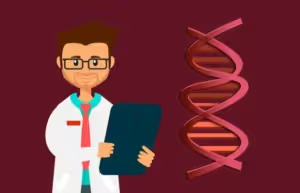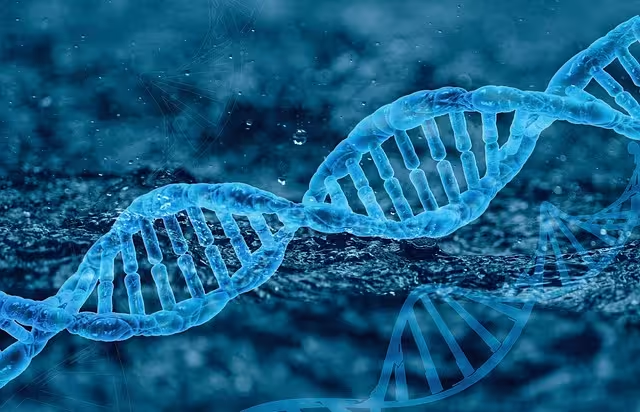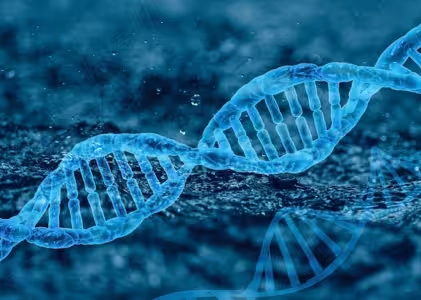If the limits between science fiction and reality are not already blurred, then technology like CRISPR surely places a monument in the ever-growing genre of genetic research. Imagine a world in which inherited genetic disorders are a thing of the past, where the very code of life can be rewritten to fend off diseases, and new traits are designed with the precision of a master artist.
This is what gene-editing technology promised with CRISPR, which has kindled a revolution in biology. Yet, with this fabulous tool, also come deep ethical questions and challenges for humanity to move through with caution.
The gene editing revolution: What is CRISPR?
It is called Clustered Regularly Interspaced Short Palindromic Repeats. This technology originated from a natural defence mechanism in bacteria. This system allows a given bacterium to recognize and cut foreign DNA, providing effective immunity. Scientists have exploited this mechanism to create a means for precisely editing genes.

They can, at will, snip the DNA by providing a guide RNA that guides the CRISPR-associated protein—Cas9—to a certain position in the genome. This allows targeted changes to be brought into the DNA.
Ethical Implications: The Double-Edged Sword of Genetic Engineering
The power and the possible applications of CRISPR are huge and transformative, and with great power comes great responsibility, therefore the ethical Fahr Electric motor-steering of gene editing has birthed an intense debate.
Medical Breakthroughs and Moral Dilemmas
The most promising application of CRISPR relates to treating genetic disorders. Single-gene mutation diseases like cystic fibrosis, sickle cell anaemia, muscular dystrophy, and others could be cured by editing faulty genes. There is a fairly promising outlook for millions of patients and their families. At the same time, it has introduced a concern regarding access and equity: who is going to receive those treatments? Will they be available to all of us, or only to those who are in a position to afford them?
Designer Babies: The Future or a Dystopian Nightmare?
However, this is one of the most controversial applications: the potential for “designer babies.” This would ostensibly involve genome editing in embryos to enhance desirable traits such as intelligence, appearance, or athletic ability. If the prospect of eradicating genetic diseases garners a big slice of support, enhancing human traits positively overflows with ethical concerns. For example, it risks opening the doors to a new kind of inequality in which genetic enhancement could serve only the rich, culminating in a society divided along the lines of genes.
Environmental and Ecological Issues
It has further applications in agriculture and environmental control. Researchers could use CRISPR to make crops more resilient to pests and pathogens or edit the genomes of highly invasive species to eradicate them.. Such uses would have some desirable effects but also carry dangers for the ecosystem. The long-term impact of genetic manipulation of released organisms is unknown, and it can disrupt delicate ecological balances.
Navigating the Ethical Landscape: Governance and Regulation
Such strong technological development of the CRISPR technology in turn goes with correspondingly strong systems of governance and regulation. The impact of gene editing knows no borders, and international cooperation in this field is much needed.

The Role of International Bodies
Organizations such as the World Health Organization and the International Summit on Human Gene Editing are very instrumental in setting up guidelines and frameworks for how this technology should be used ethically. These bodies bring together scientists, ethicists, and policymakers together to ensure gene editing occurs in a responsible and transparent manner.
Ethical considerations for national legislatures: proper protection of informed consent, public engagement
Researchers and clinicians must inform individuals participating in gene editing trials and procedures about the possible risks and benefits, and also engage the public in discussions on ethical practices to build trust and ensure that societal values are reflected in the regulations developed around this technology.
The Future of CRISPR: Promise and Peril
Looking into the future, one has to acknowledge the fact that although CRISPR comes with great promise, an equal amount of peril can be attached to it. The ability to cure diseases caused by genes and improve health is promising on this avenue. However, ethics and prospective risks do demand care and responsible stewardship.
Personalized Medicine
However, one of the most exciting prospects has to be that wavelength personalized medicine will soon get a chance to thrive. Having understood the genetic makeup of any patient, treatments can be tailored in such a way that they improve in efficacy and also become associated with reduced side effects. That’s a new paradigm of health care functioning—at least away from the one-size-fits-all approach to a more precise and individualized model.
The Risk of Genetic Discrimination
Genetic discrimination is set to test the contemporary world with the increasing incorporation of genomic information into health care. This raises fears of possible discrimination against any person because of their genetic profile which will feature in their insurance policies, job opportunities, and other measures of opportunities. Strong provisions should be enacted in the law to protect an individual from discrimination in relation to genetic information as we advance.
Conclusion: Empowering Innovation; Protecting Values
New disruptive power in the form of CRISPR holds important promises for human health and well-being against a backdrop of change. The ethical dimensions associated with gene editing also appear to be numerous and complex. We must take a responsible, inclusive, transparent, and fair approach to balance the benefits of CRISPR against its risks and ethical concerns.

More than ever, the way forward into this new frontier would require ethical governance, public engagement, and international cooperation. We must open a dialogue – one that brings together a kaleidoscope of perspectives and values – to channel the power of CRISPR towards the betterment of all humanity while mitigating its risks.
For more on CRISPR and Gene Editing, check out the following related articles. AI in Healthcare – Remoulding medical Diognosis Sustainable Technologies – Protecting the Planet one Innovation at a Time Genetic Engineering – Designing Life From Scratch Climate Change Prevention – A Comprehensive Guide for this Crisis Blockchain – Unlocking the Potential of a Revolutionary TechnologyFrequently Asked Questions
1. What is CRISPR and how does it work?
Editing-concept guide RNA that passé the Cas9 protein to a specific site along the genome where it cuts the DNA to enable target modifications. Scientists developed this technique from a natural defence mechanism within bacteria.
2. What are the possible applications of gene editing tools known as CRISPR?
Such potential applications of CRISPR include gene therapies for genetic disorders, genetically engineering crops to confuse insects, personalized medicine, and even eradicating invasive species.
3. What are some of the ethical issues associated with CRISPR?
Some of the ethical concerns relate to genetic discrimination, “designer babies,” and access and equity concerns, as well as long-term ecological impacts resulting from the release of genetically manipulated organisms into the environment.
4. How is CRISPR regulated?
The regulation of the CRISPR spans across international bodies like the WHO to the national and regional bodies of regulators. Gene editing responsibly and ethically is developing guidelines and frameworks for these organizations.
5. What’s in Store for the Future with CRISPR?
There is much potential for medical breakthroughs in the future with CRISPR: from personalized medicine to treating genetic diseases. The use of CRISPR technology raises ethical, legal, and social concerns about whether it will be carried out equitably and responsibly.
References
- Doudna, J. A., & Charpentier, E. (2014). The new frontier of genome engineering with CRISPR-Cas9. Science, 346(6213), 1258096.
- National Academies of Sciences, Engineering, and Medicine. (2017). Human genome editing: Science, ethics, and governance. The National Academies Press.
- World Health Organization. (2021). WHO issues new recommendations on human genome editing for the advancement of public health.
- International Summit on Human Gene Editing. (2018). Consensus study report on the science, ethics, and governance of human gene editing.


